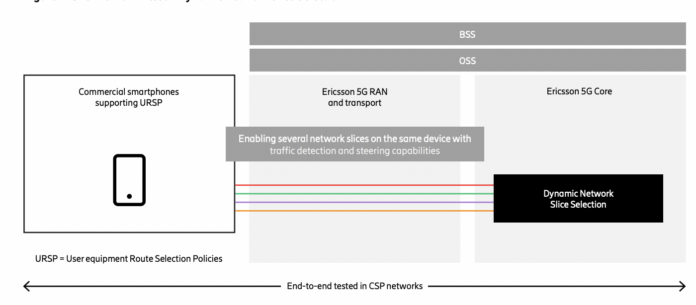Considerations include operational readiness, business case development and go-to-market strategy
A logical, virtual, end-to-end network slice that automatically comes into being to serve the exacting requirements of a particular horizontal or vertical use case—that’s a big part of the vision of 5G and the monetization opportunities it can support. But network slicing has yet to meaningfully be realized in the real world. So what exactly are the big barriers here, and how is the telecoms industry working to get things sorted?
Ericsson VP of Architecture, Technology & E2E Solutioning Arvinder Anand laid out four questions operators need to answer as they work to bring network slicing to market:
- Do you want to start by focusing on a vertical slice that would, for instance, serve connected vehicles? Or do you want to carve up a horizontal slice that would support augmented reality for consumer and enterprise users in all segments?
- How do you translate technological capabilities into a compelling business case that addresses a gap in the market?
- How do you then take the tech and business case to real clients with real business problems?
- And is the organization–in this case a mobile network operator–have the right people in the right positions to make the whole thing viable?
“From a technology point of view, we have most of those basic assets to realize slicing,” Anand said, noting that Ericsson is involved in around 50 network slicing proofs of concept. In terms of business case and go to market, “I think most of the verticals out there, or enterprises, they want proof points…It’s extremely important for us to educate our enterprises on the benefits of slicing, and engage them in trials to develop those proof points.”
Beyond the technology piece, network slicing also requires “organizational transformation”
As for the operational readiness piece, he said, “Slicing is a fundamental shift…there is definitely a strong need for an organizational transformation.” This comment applies more broadly than slicing given the ongoing move to software-centric networks being operating in distributed hybrid cloud environments; this approach benefits from an agile workforce organized following a DevOps methodology. “This is one of those key priority areas, and it sometimes takes time,” Anand said. “It should therefore be started in parallel with technology and business planning.”
Providing perspective from an operator, Verizon Associate Fellow of Global Network and Technology Mark Watts tied network slicing to the ability to “capitalize on the investments we have made within the 5G space.” He said a slice tuned to–and guaranteed to provide–a specific level of service against various KPIs–would give “extra differentiation…We’re excited about slicing and what it can do for our end users.”
Sketching out the broad strokes of how network slicing could be implemented, Watts called out that a persistent slice would clearly be an easier first step than a dynamic slice. He also said that the all-important assurance aspect of a service running across a slice brings complexities in monitoring and optimizing. But, “Five years ago we may not have had the correct tools or mechanisms to test into the network in multi[ple] directions in faster frequencies of sampling. We can do a lot more now than we could in years past…The technology is converging.”
Elaborating on the test piece, Signals Research Group VP of Network Technology Emil Olbrich talked through the importance of service management and orchestration in aligning different network domains and resources for a slice. “The magic thing that glues this all together is this orchestration that the vendors sell.” Part of this is allowing applications to access the network infrastructure. “You’re giving a lot of trust to a vendor…That’s a big mind shift.”
Olbrich also stressed that before the network slicing conversation matures, operators need to focus on the transition from Non-standalone to Standalone 5G which brings in a cloud-native core. “I think getting SA moving as quickly as possible…the rest will follow suit.”
Last word to Anand: “The recommendation is to start. Start small by leveraging existing technical capabilities and gradually add complexity. Apply a business-led approach…[And] engage and learn from the ecosystem.”
Arvinder: already starting. “The recommendation is to start. Start small by leveraging existing technical capabilities and gradually add complexity. Apply a business-led approach…Engage and learn from the ecosystem.”
For more of this conversation and more, check out the Test and Measurement Forum available on-demand.

